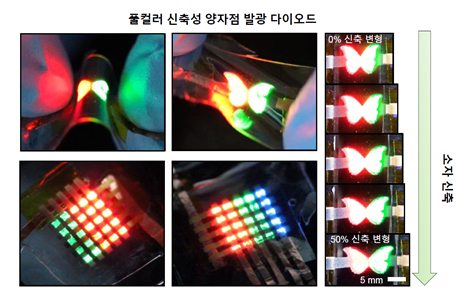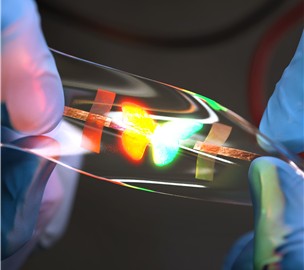주메뉴
- About IBS 연구원소개
-
Research Centers
연구단소개
- Research Outcomes
- Mathematics
- Physics
- Center for Underground Physics
- Center for Theoretical Physics of the Universe (Particle Theory and Cosmology Group)
- Center for Theoretical Physics of the Universe (Cosmology, Gravity and Astroparticle Physics Group)
- Dark Matter Axion Group
- Center for Artificial Low Dimensional Electronic Systems
- Center for Theoretical Physics of Complex Systems
- Center for Quantum Nanoscience
- Center for Exotic Nuclear Studies
- Center for Van der Waals Quantum Solids
- Center for Relativistic Laser Science
- Chemistry
- Life Sciences
- Earth Science
- Interdisciplinary
- Center for Neuroscience Imaging Research (Neuro Technology Group)
- Center for Neuroscience Imaging Research (Cognitive and Computational Neuroscience Group)
- Center for Algorithmic and Robotized Synthesis
- Center for Nanomedicine
- Center for Biomolecular and Cellular Structure
- Center for 2D Quantum Heterostructures
- Institutes
- Korea Virus Research Institute
- News Center 뉴스 센터
- Career 인재초빙
- Living in Korea IBS School-UST
- IBS School 윤리경영


주메뉴
- About IBS
-
Research Centers
- Research Outcomes
- Mathematics
- Physics
- Center for Underground Physics
- Center for Theoretical Physics of the Universe (Particle Theory and Cosmology Group)
- Center for Theoretical Physics of the Universe (Cosmology, Gravity and Astroparticle Physics Group)
- Dark Matter Axion Group
- Center for Artificial Low Dimensional Electronic Systems
- Center for Theoretical Physics of Complex Systems
- Center for Quantum Nanoscience
- Center for Exotic Nuclear Studies
- Center for Van der Waals Quantum Solids
- Center for Relativistic Laser Science
- Chemistry
- Life Sciences
- Earth Science
- Interdisciplinary
- Center for Neuroscience Imaging Research (Neuro Technology Group)
- Center for Neuroscience Imaging Research (Cognitive and Computational Neuroscience Group)
- Center for Algorithmic and Robotized Synthesis
- Center for Nanomedicine
- Center for Biomolecular and Cellular Structure
- Center for 2D Quantum Heterostructures
- Institutes
- Korea Virus Research Institute
- News Center
- Career
- Living in Korea
- IBS School
News Center
|
Interest in stretchable displays, which can stretch freely, is increasing as they are seen as the next-generation display technology to follow flexible and foldable displays. Recently, the IBS Center for Nanoparticle Research developed the world’s first high-performance stretchable QLED using quantum dot nanoparticles, presenting new possibilities. The participating researchers explain the significance of this research and key concepts you need to understand. What is a Morphable Display?A display is an electronic device that delivers various visual information to users and plays a key role in modern electronic devices. With the rapid development of information and communication technology, such as the widespread adoption of smartphones, it’s no exaggeration to say that we spend most of our daily lives with displays. Consequently, the size, shape, and overall form factor of displays have undergone significant changes. Around 20 years ago, display form factors were relatively monotonous, focusing on devices like TVs and PC monitors. Nowadays, displays are integrated into various objects, including mobile devices, car interiors, windows, and home appliances, creating a wide range of product categories. The development of flexible electronics technology, including core materials and processes for displays, has led to the creation of new form factors, such as curved displays, moving beyond traditional flat displays. In particular, morphable display technology, such as flexible displays that can change shape, has become one of the key trends in next-generation display development. These morphable displays are not only aesthetically pleasing but also offer new user experiences, such as flexible screen usage for different applications. This technology has recently been selected as one of the top 50 national strategic technologies and is considered essential for maintaining a competitive edge in the global display market. How to Implement Stretchable Displays?Following the successful commercialization of foldable smartphones developed by Samsung Electronics, major global display manufacturers have announced plans to develop various next-generation morphable displays, such as rollable displays that can be rolled up like paper and foldable displays that can be folded multiple times. Among these, stretchable displays, which can expand and contract freely, are gaining significant attention as they offer even greater shape flexibility than existing flexible and foldable displays, making them a promising next-generation form factor. The biggest challenge in implementing stretchable displays is ensuring that internal electronic components, including light-emitting elements, maintain their original performance when subjected to deformation. Since most core materials in conventional displays have rigid mechanical properties, a new approach is needed to create stretchable displays. The first method involves connecting rigid light-emitting elements using stretchable wiring with a unique structure, resembling a "bridge-island" design. In this case, most of the deformation is concentrated in the stretchable wiring, allowing the light-emitting elements to maintain their original performance. However, this approach has drawbacks, such as a decrease in the fill factor (the proportion of the screen area occupied by the light-emitting part), resulting in reduced image quality and lower mechanical reliability at the interface between the light-emitting elements and the wiring. As an alternative, the "intrinsically stretchable" approach has been proposed, which replaces all key display materials, including electrodes and the light-emitting layer, with new materials that are flexible and stretchable. This method has gained considerable research attention, with notable examples including a stretchable organic light-emitting device reported by a research team at Stanford University in the prestigious journal Nature in 2022. However, the performance of intrinsically stretchable light-emitting devices reported so far has been low, with maximum brightness of 7,450 nits and a driving voltage of 15V, requiring continuous research and development in materials and processes.
Two approaches to implement strechable displays Developing High-Performance Stretchable QLEDsPaper: Intrinsically stretchable quantum dot light-emitting diodes, Nature Electronics 2024 To dramatically improve the performance of intrinsically stretchable light-emitting devices, our research team at the IBS Center for Nanoparticle Research focused on improving the light-emitting layer material. The team developed a stretchable quantum dot light-emitting diode (QLED) by mixing 10nm-sized quantum dots (nanoparticles) with an elastomer to form a uniform nanocomposite thin film as the light-emitting layer. Quantum dots, compared to polymer emitters used in previous intrinsically stretchable light-emitting devices, offer higher quantum efficiency and superior optical properties, maximizing performance in brightness and color reproduction. The newly developed stretchable QLED, using this quantum dot composite thin film, achieved a maximum brightness of 15,170 nits and a driving voltage of 6.2V, significantly outperforming previously developed stretchable light-emitting devices. The device demonstrated excellent mechanical properties, withstanding stretching up to 1.5 times its original length without mechanical damage or degradation in light-emitting performance. Additionally, new high-resolution patterning technology was developed, enabling the creation of full-color stretchable QLED devices containing red (R), green (G), and blue (B) stretchable quantum dot light-emitting layers. This result was reported in the prestigious journal Nature Electronics (IF 34.3) in April 2024.
Stretchable QLED maintains light output performance while being stretched Applying Stretchable QLEDs to Next-Generation DisplaysThe stretchable QLED developed by our research team shows high potential for applications, as it maintains high resolution and color reproduction without loss of performance when stretched. This technology could be applied to areas where flexible or foldable form factors are difficult to implement, such as curved displays in car interiors, and is expected to accelerate the era of freeform displays. Our team continues to conduct follow-up research to further enhance the technological maturity of this breakthrough, and we hope that this technology will contribute to maintaining a competitive edge in the global display market in the near future.
Stretchable QLED developed by the researchers |
| Next | |
|---|---|
| before |
- Content Manager
- Communications Team : Kwon Ye Seul 042-878-8237
- Last Update 2023-11-28 14:20















